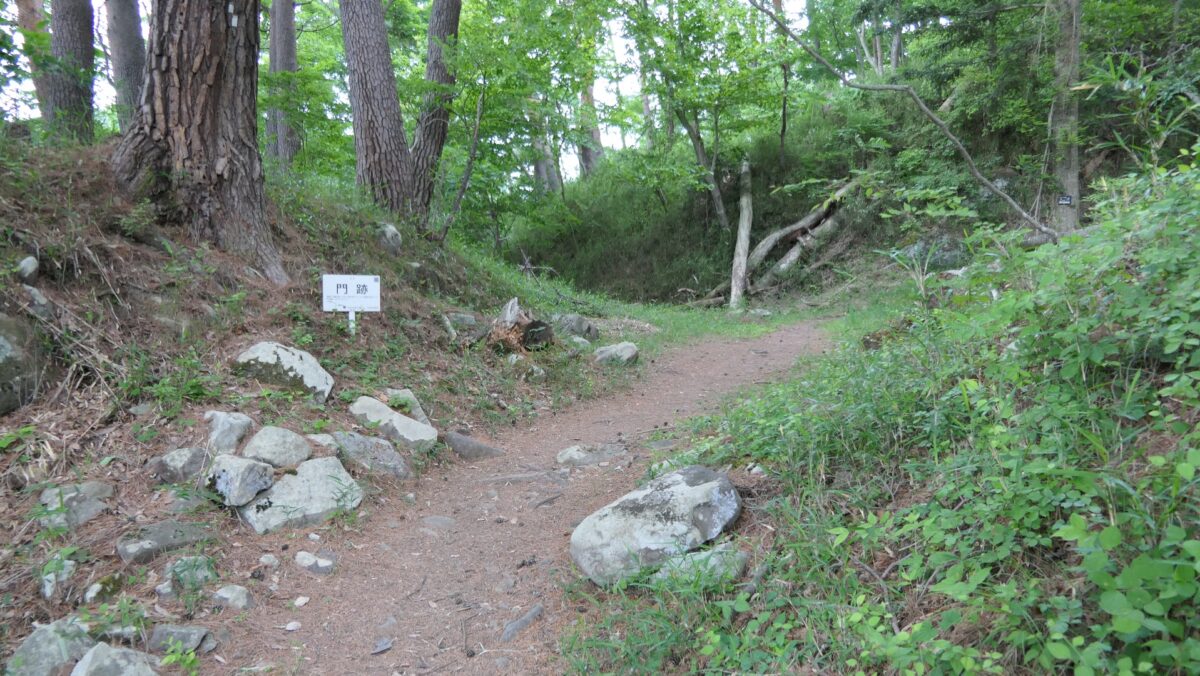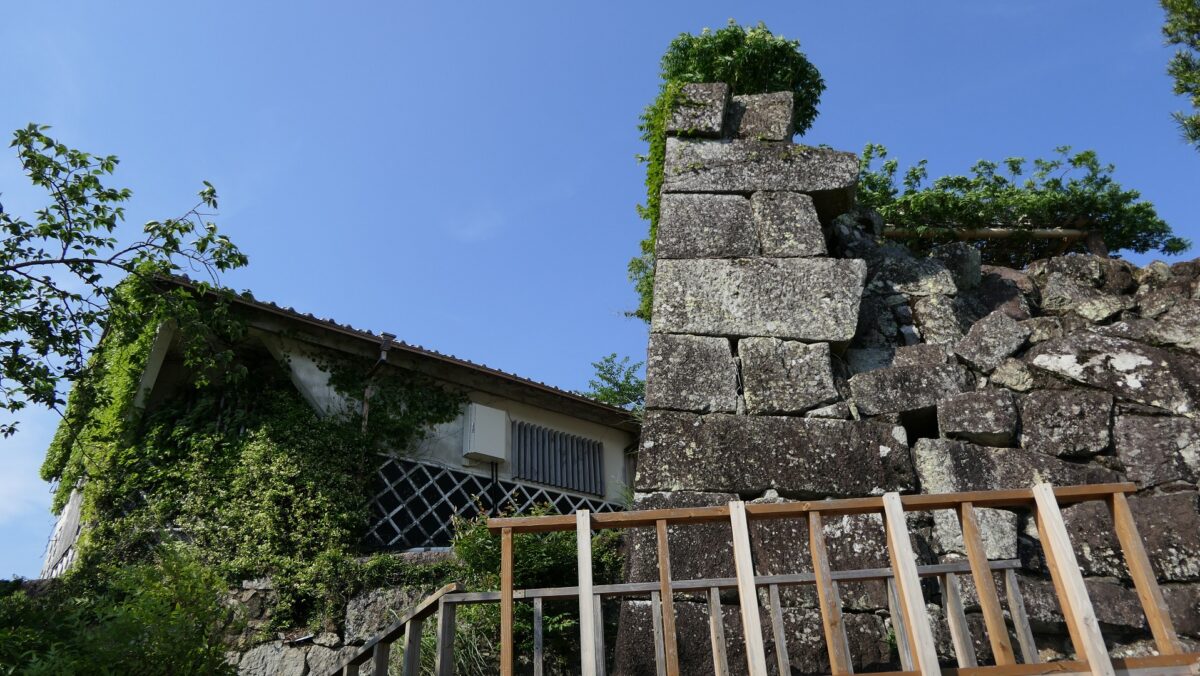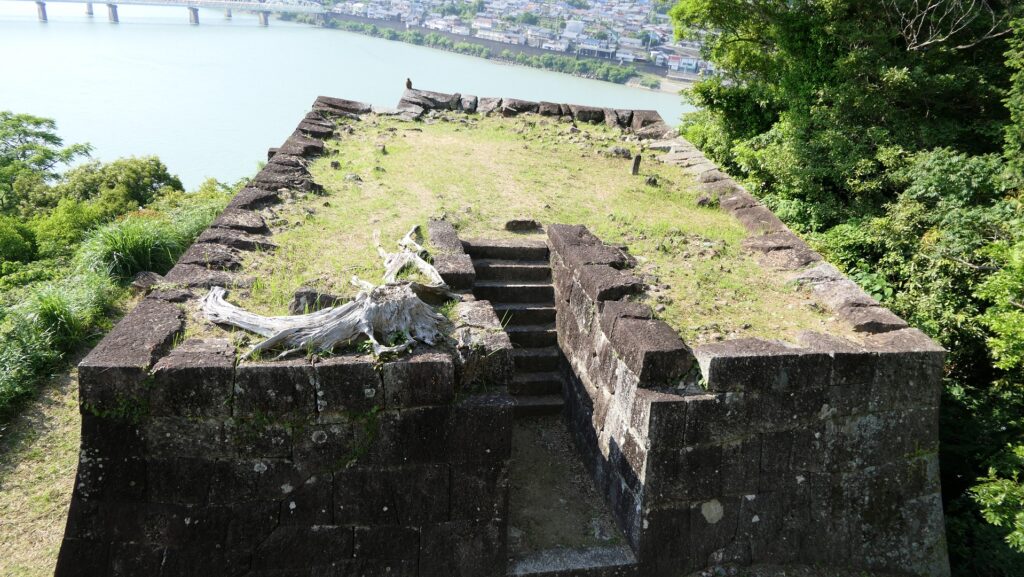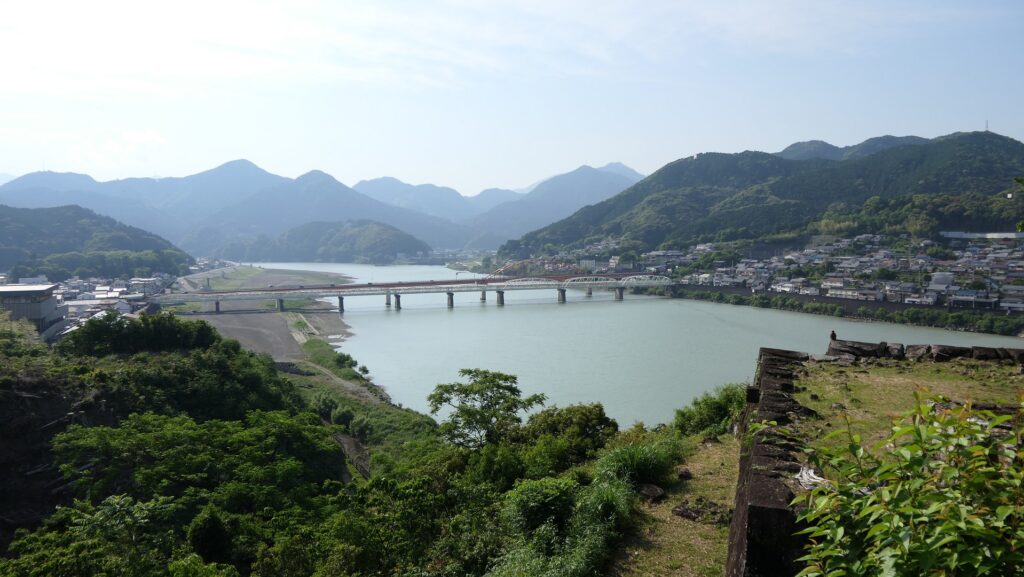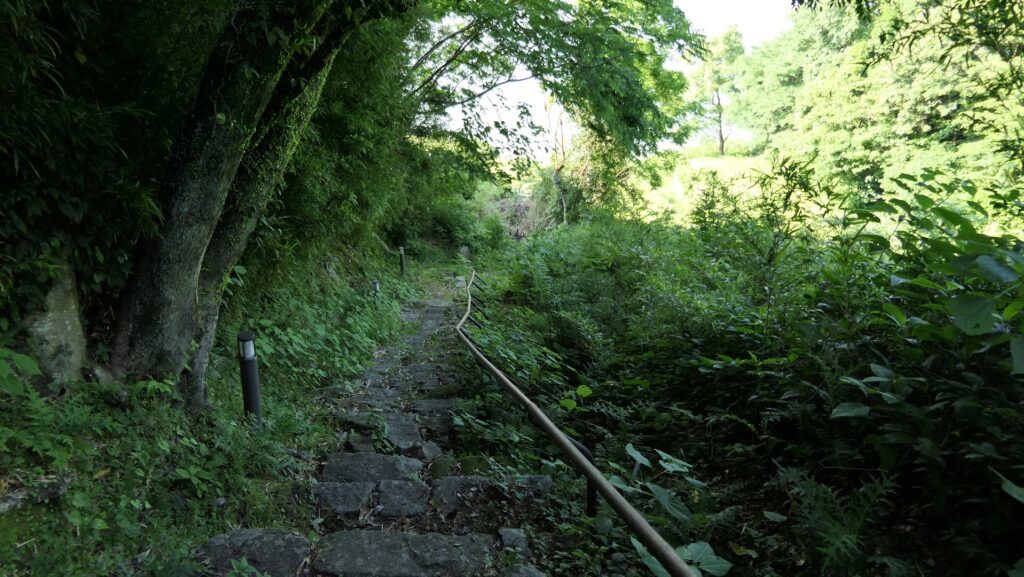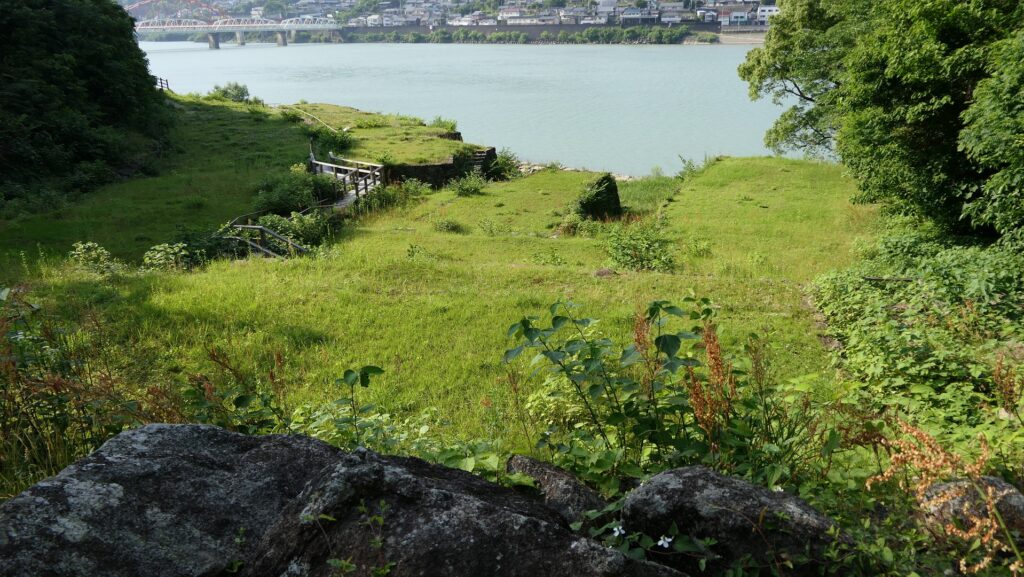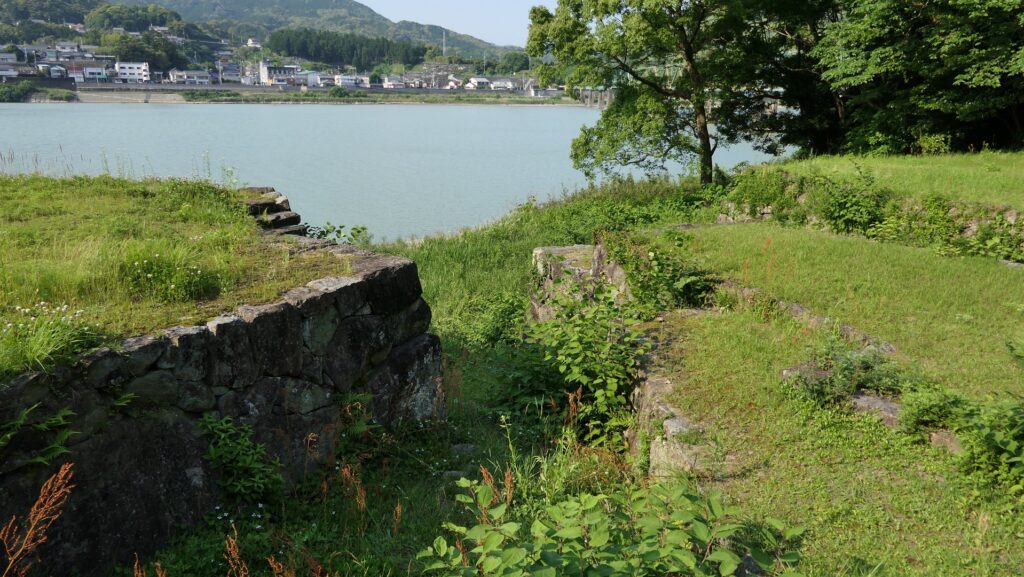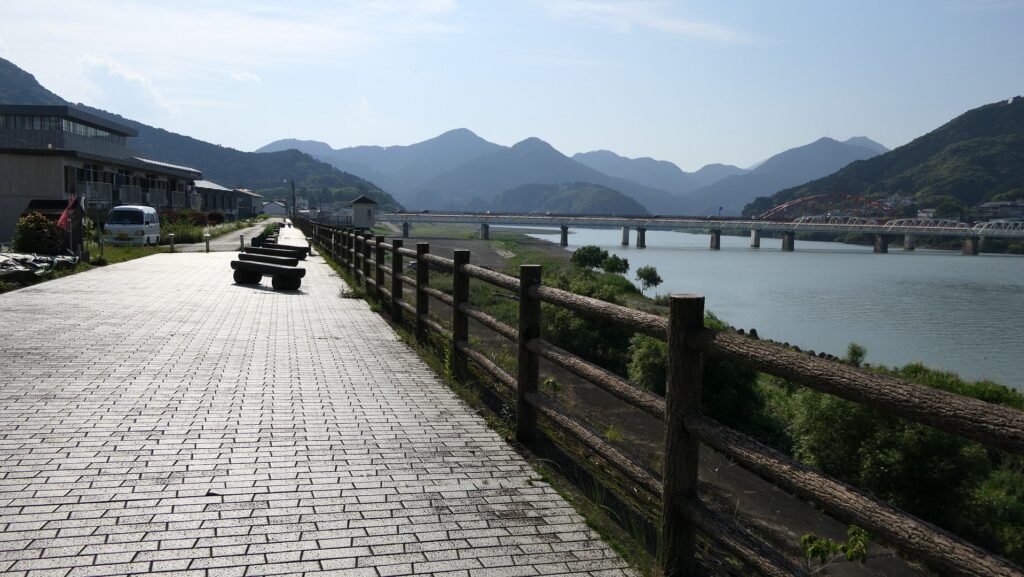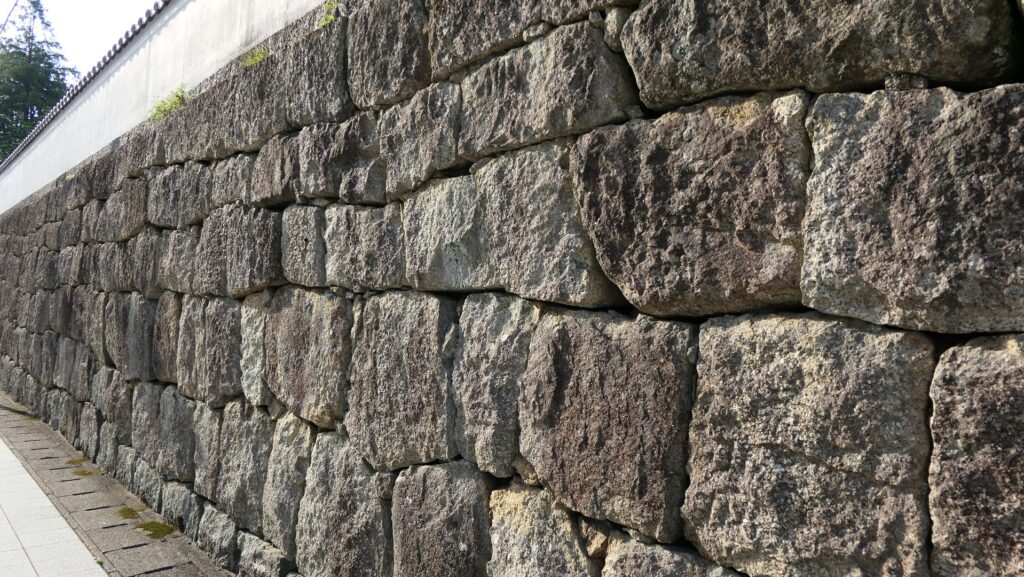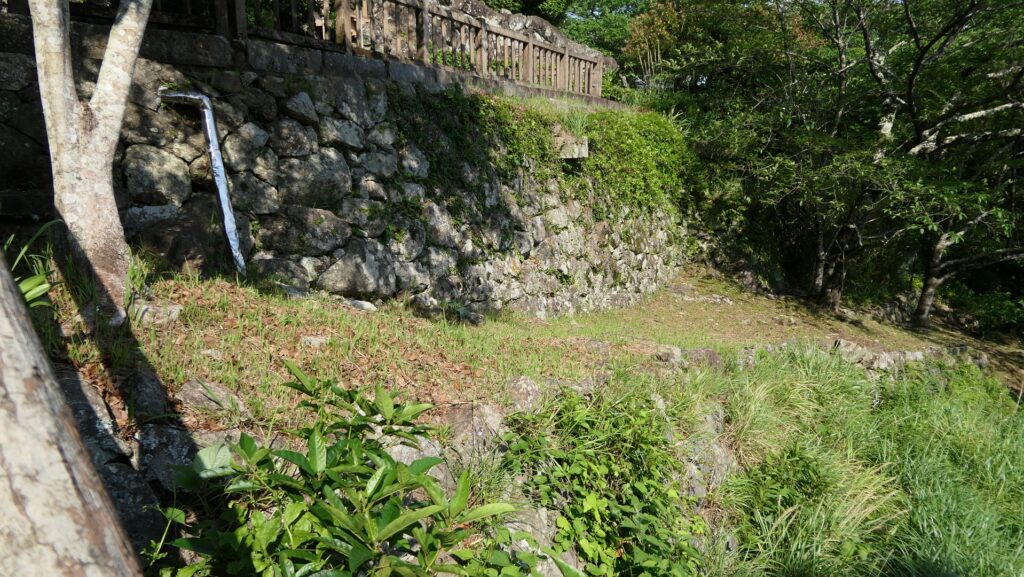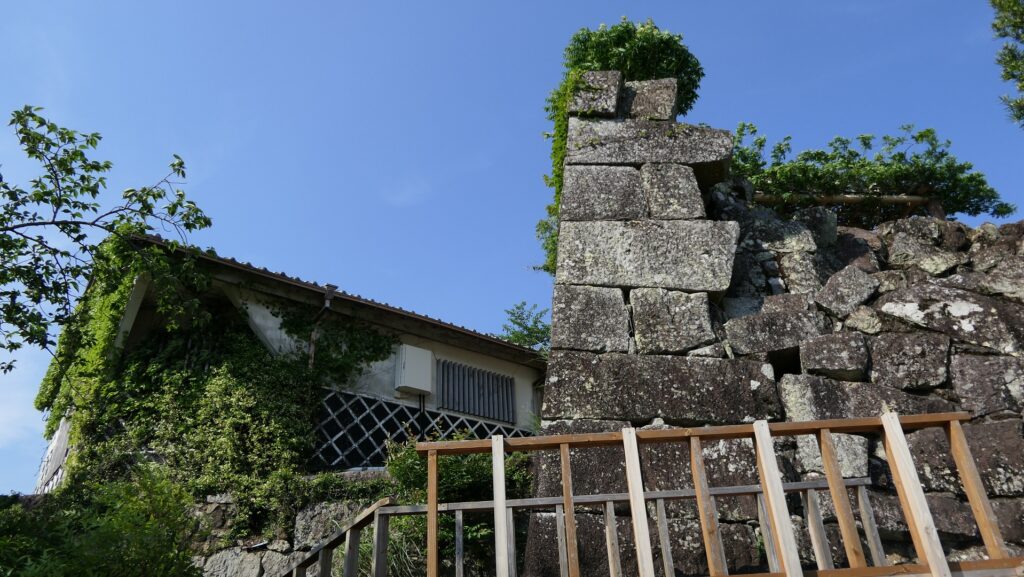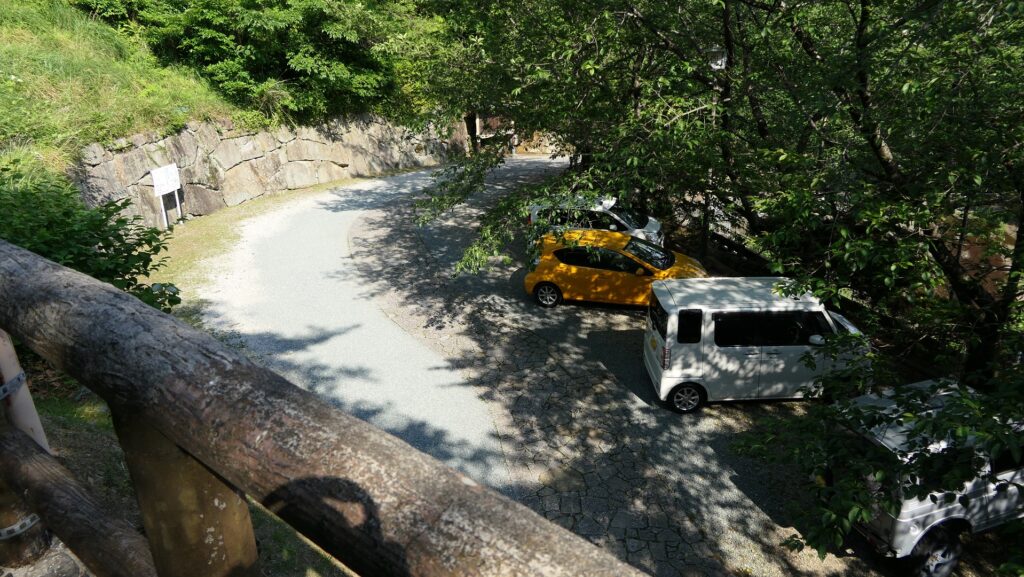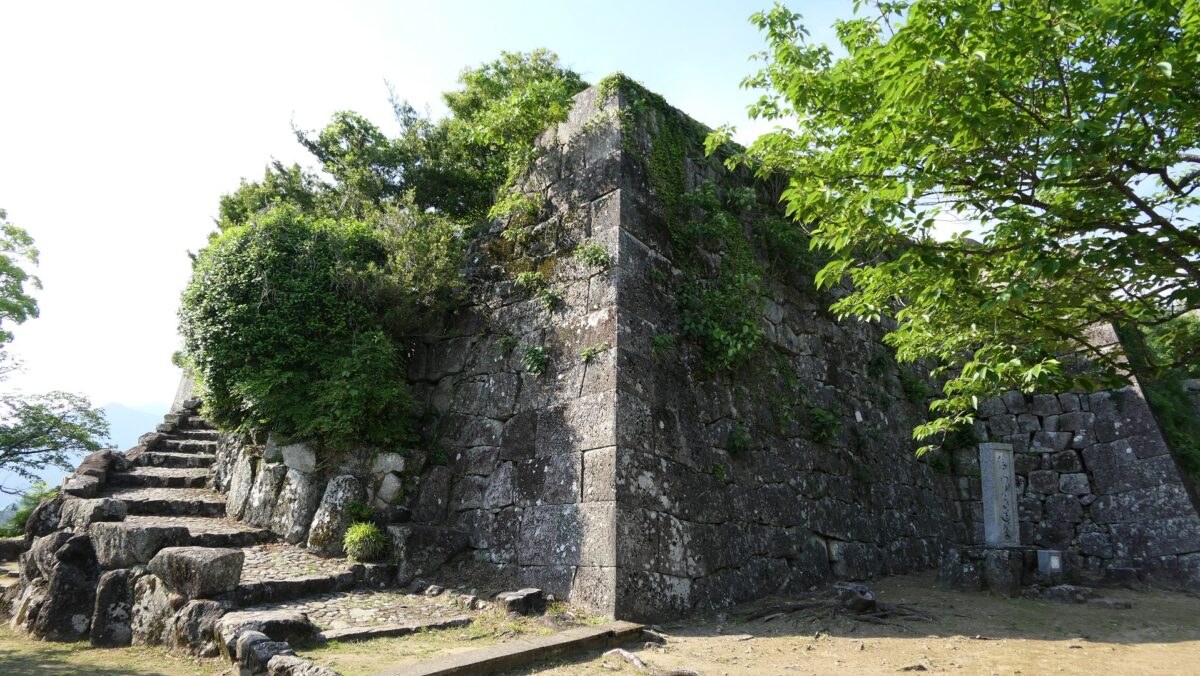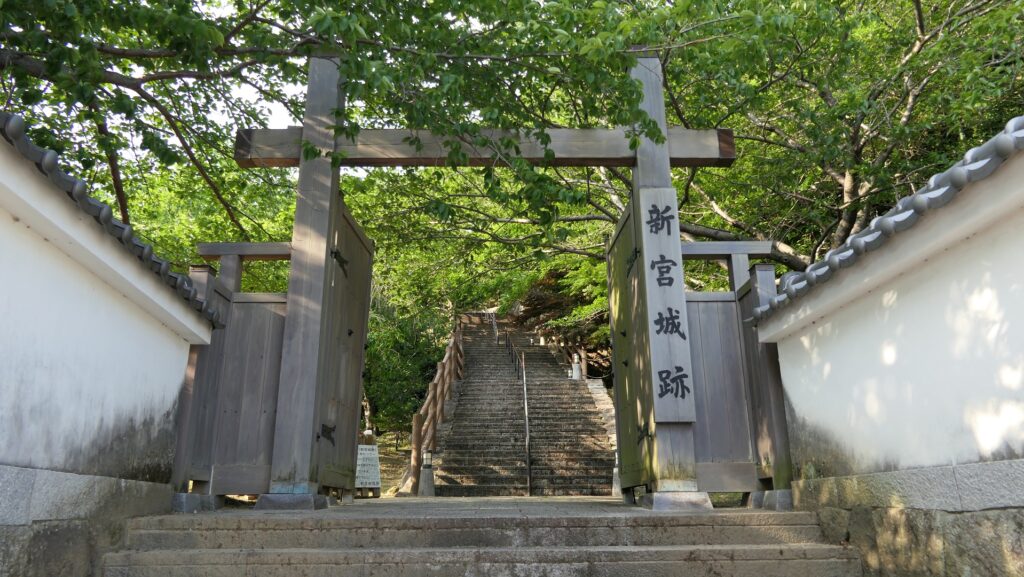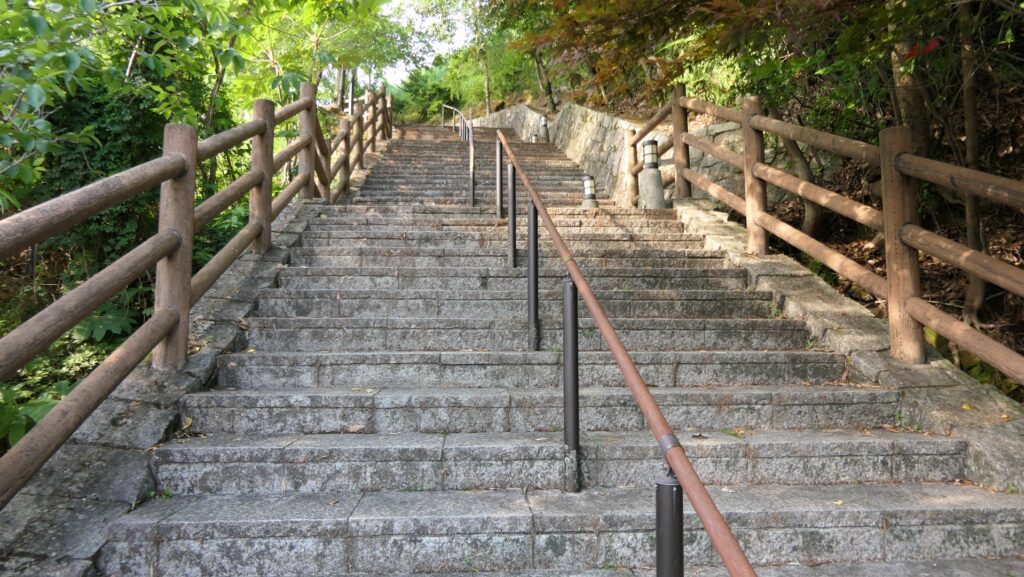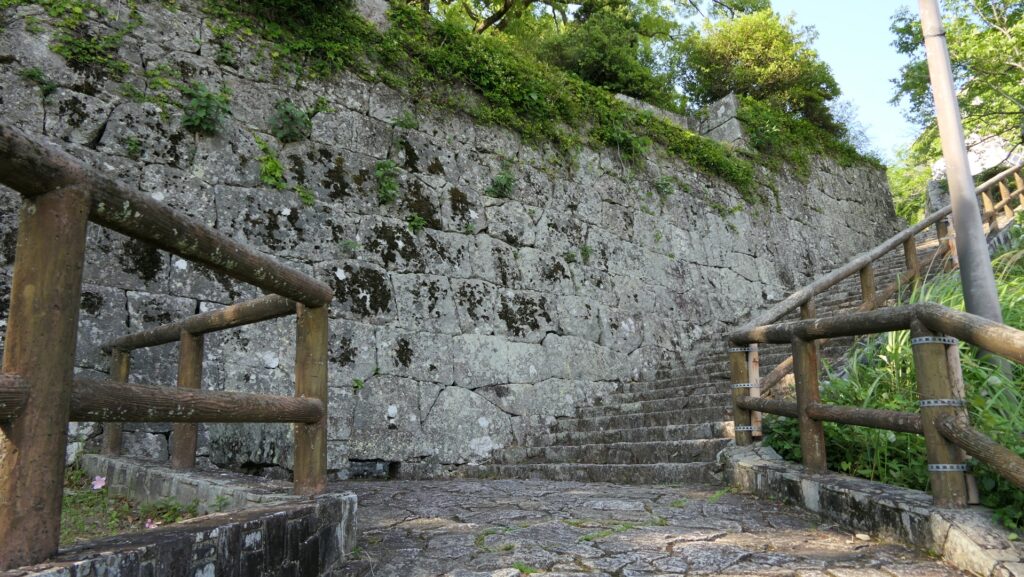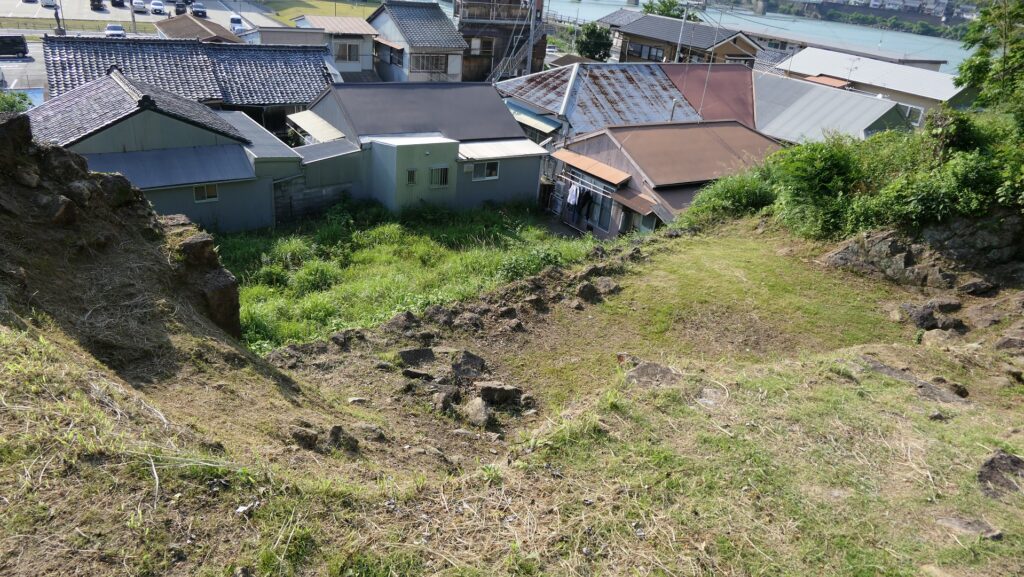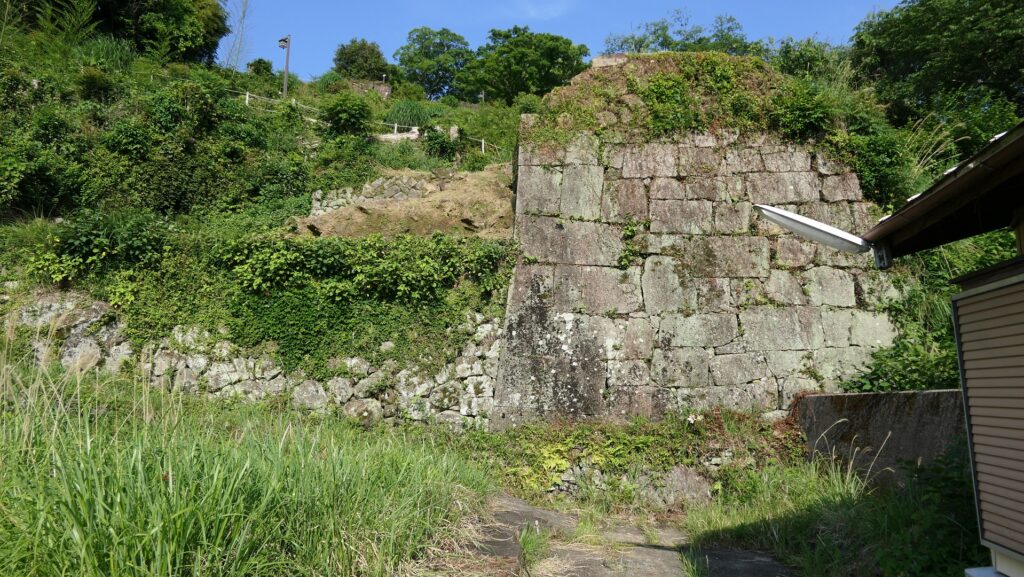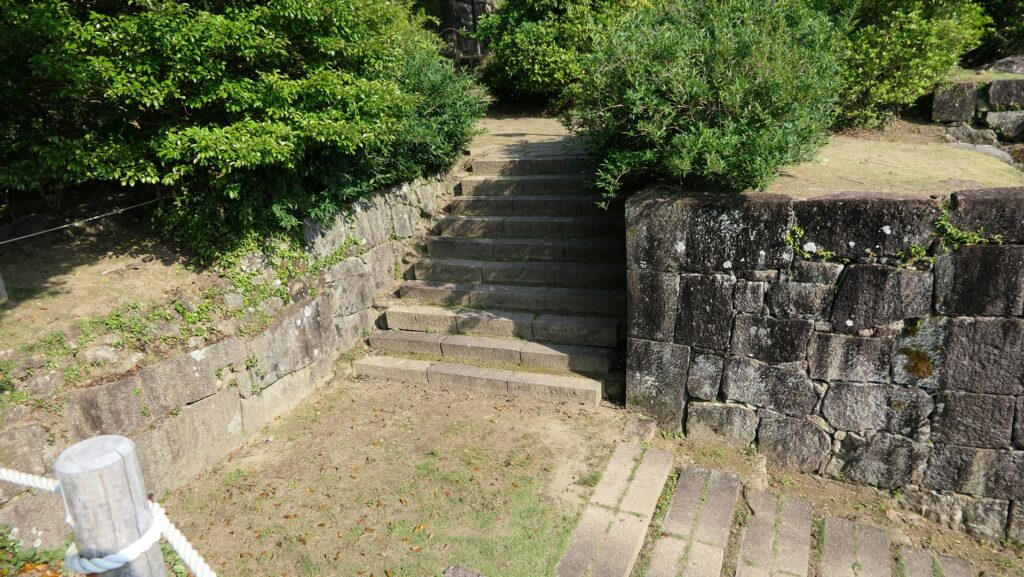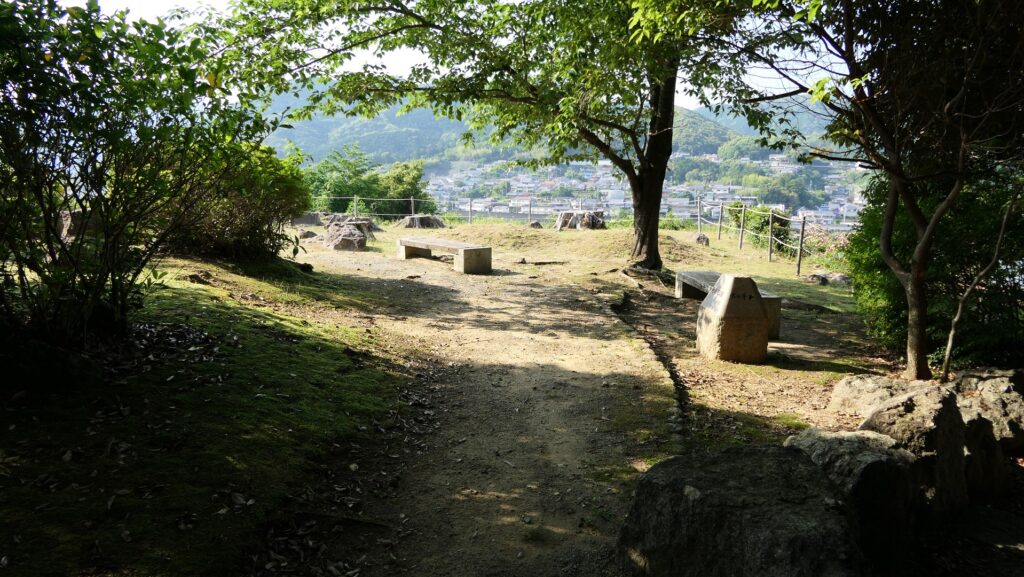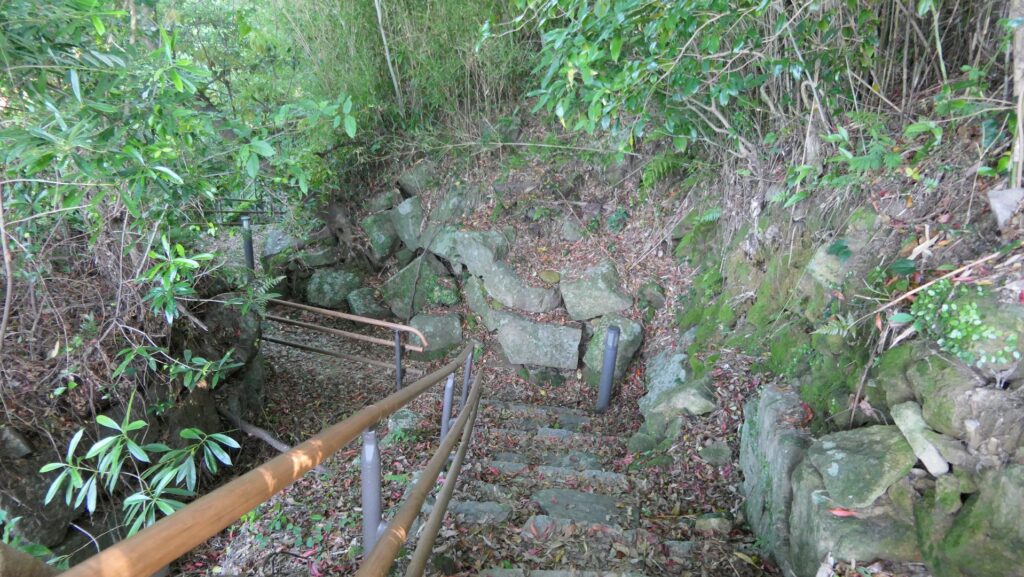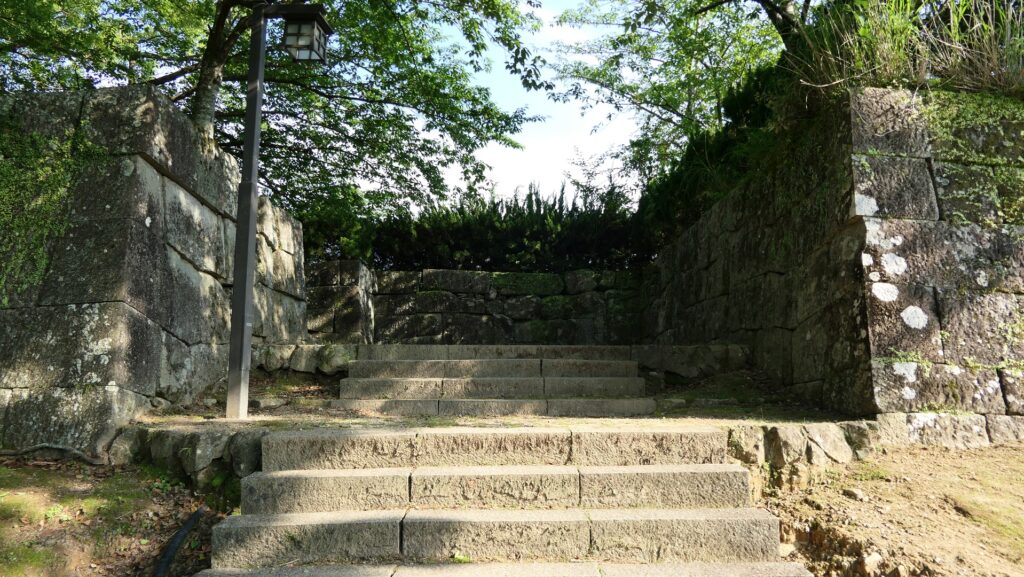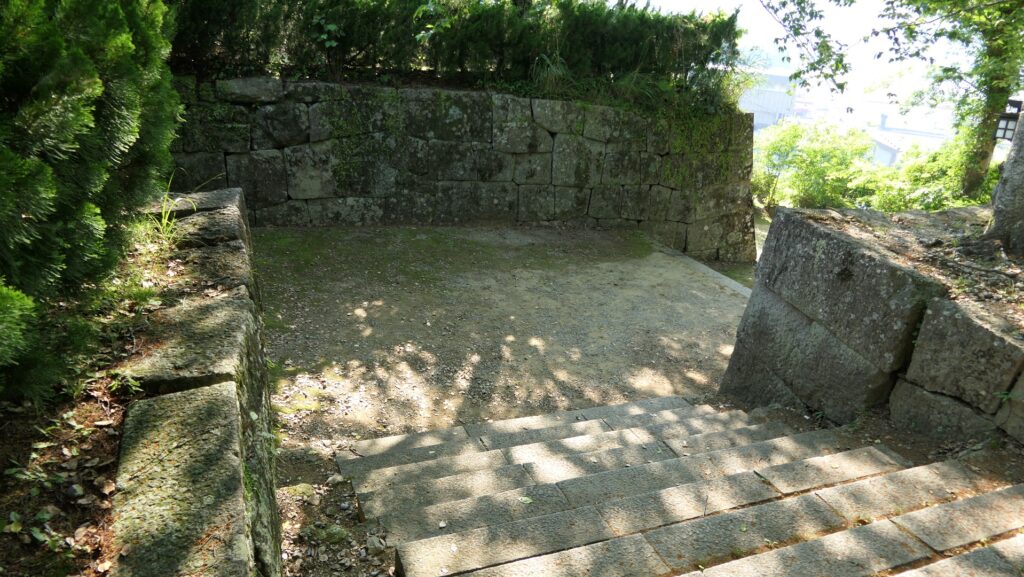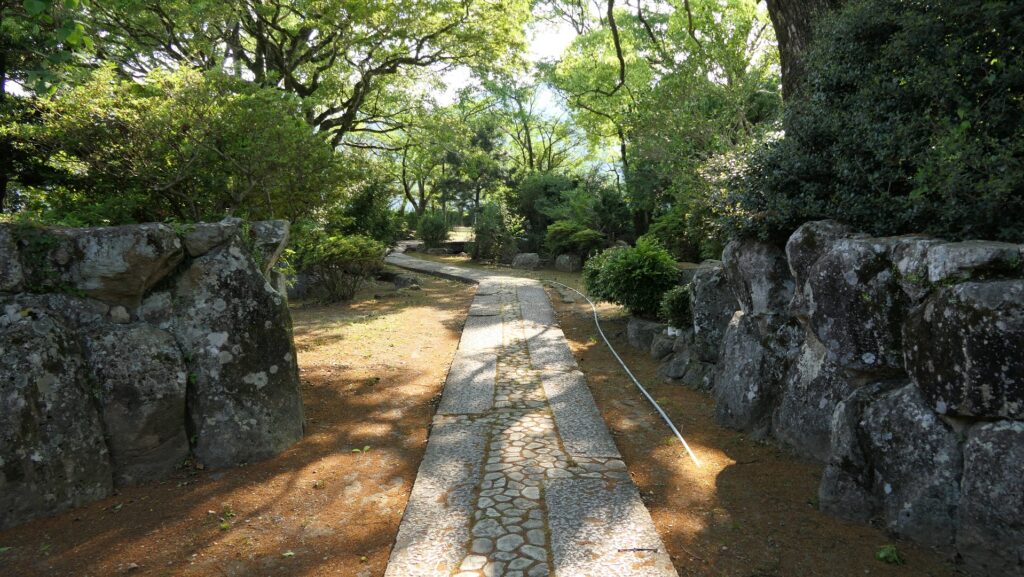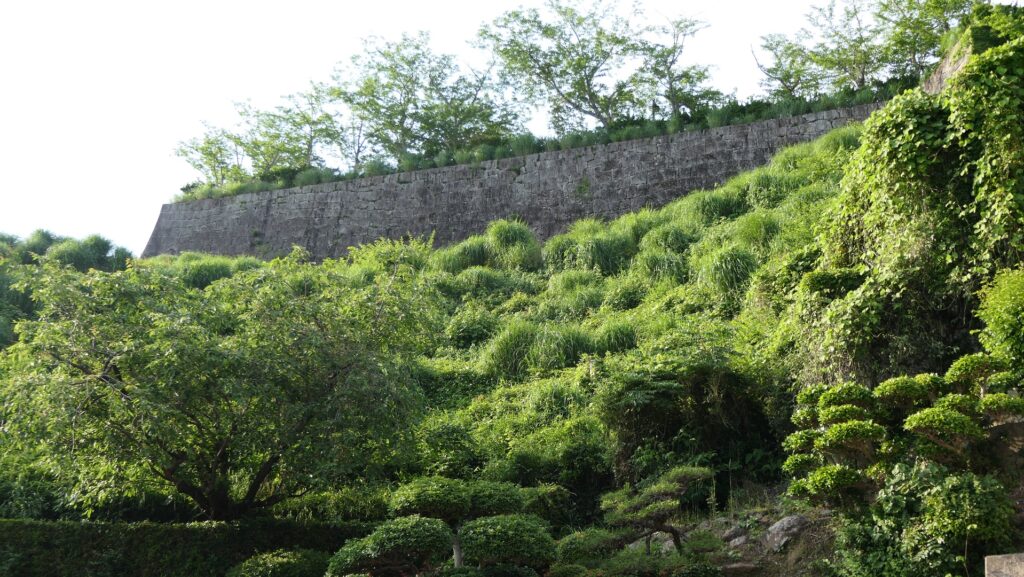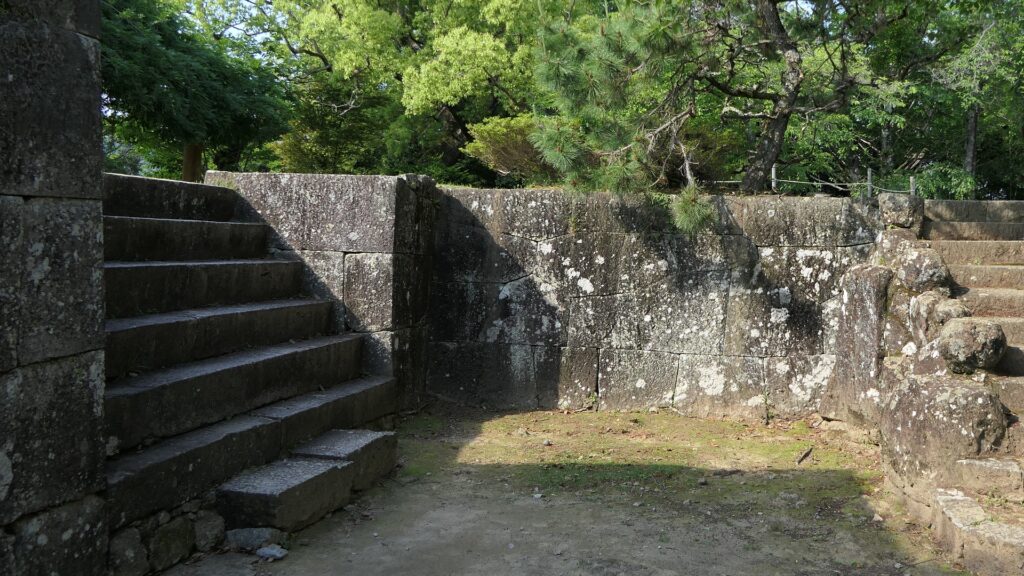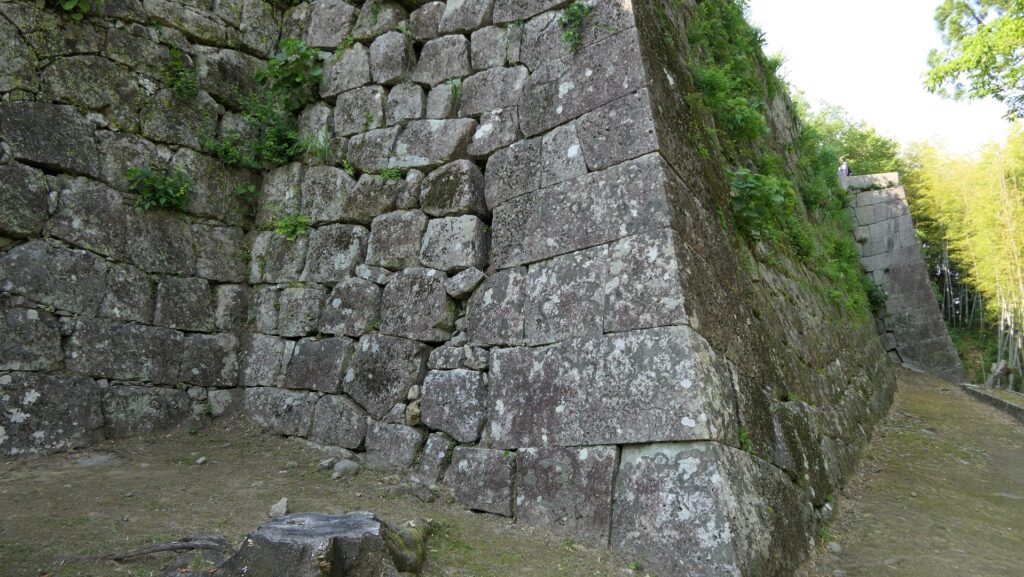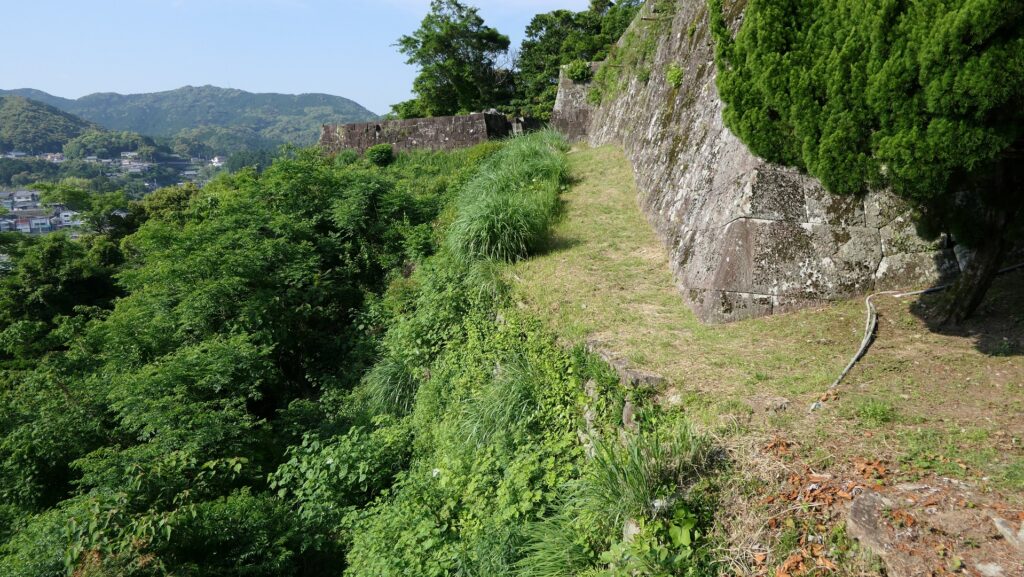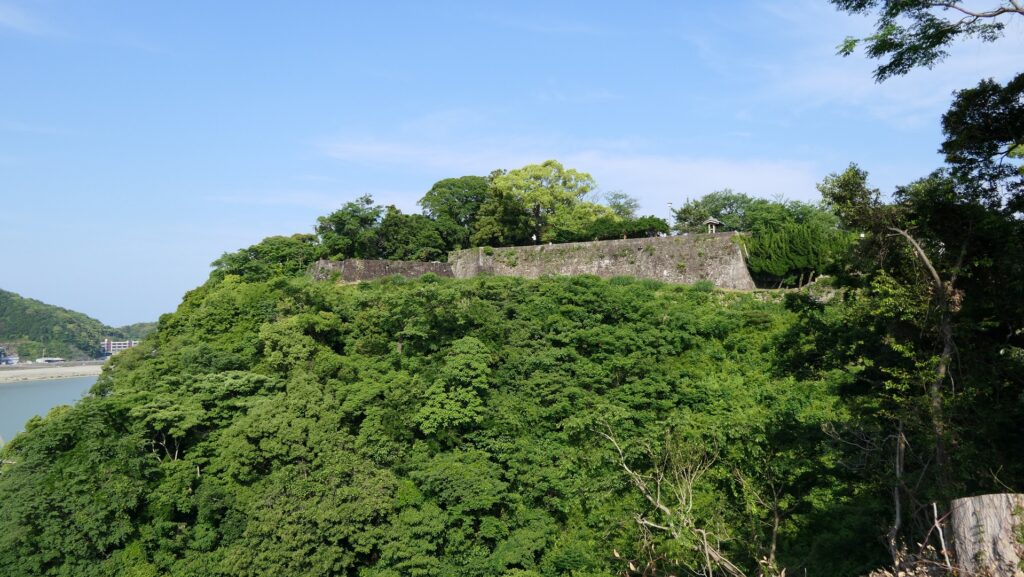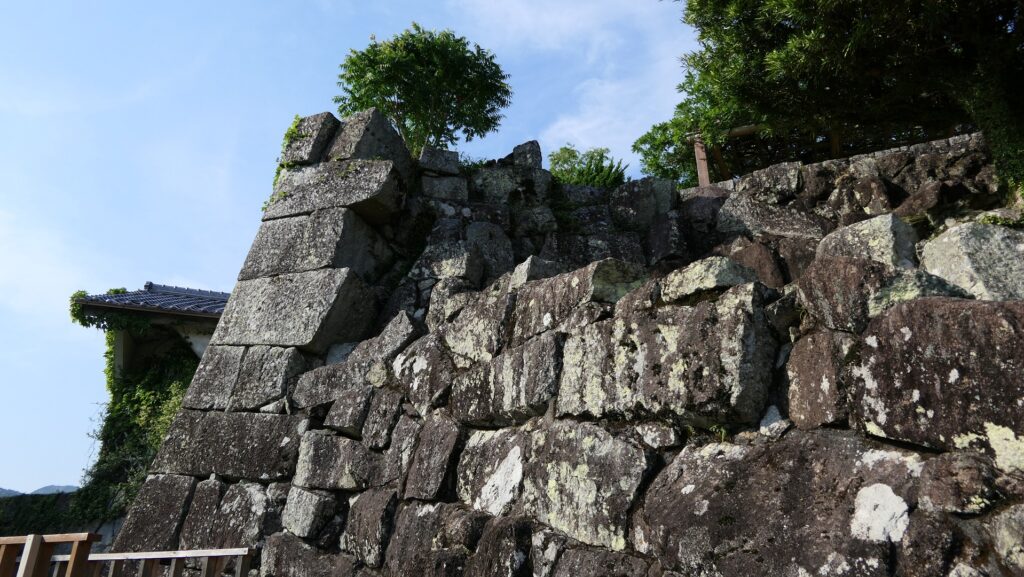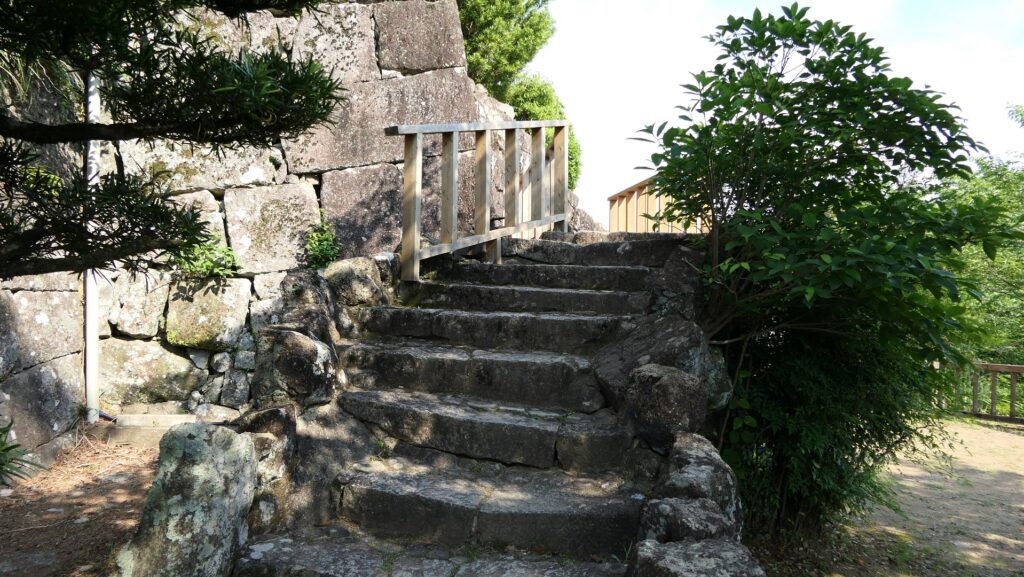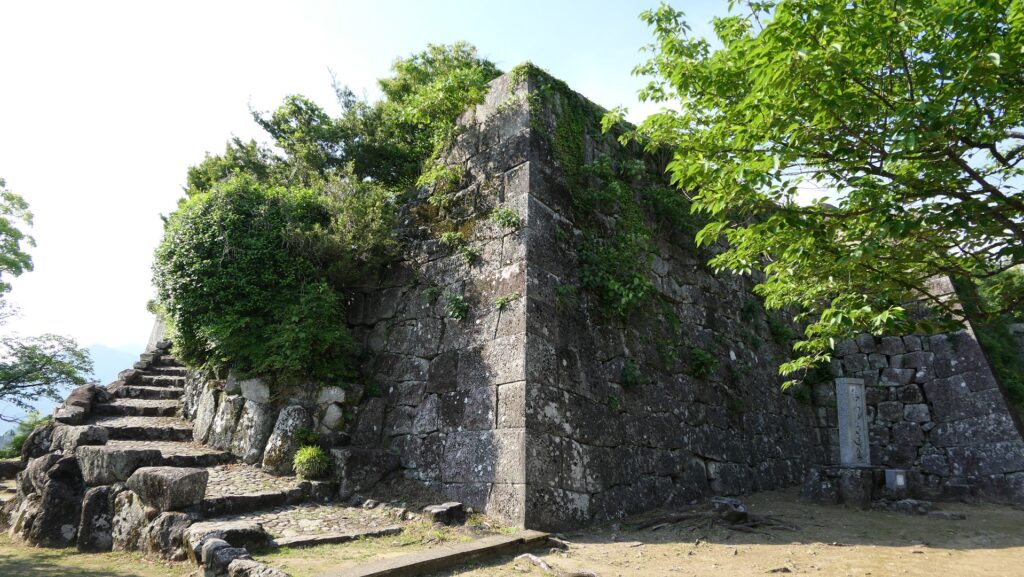Features
Castle Ruins on Hiking course
Today, the ruins of Yogaiyama Castle are on a hiking course as well as a historical site in Kofu City. The top of the ruins on the mountain is about 250m above the starting point of the trail at the foot. Therefore, you need to prepare for a long hike or a grueling climb to visit the ruins, which takes over 30 minutes to reach the top. The first half of your tour will be a pure hike by climbing a natural zigzagging trail. You may see some stone walls along the route, but they were probably built after the castle period.

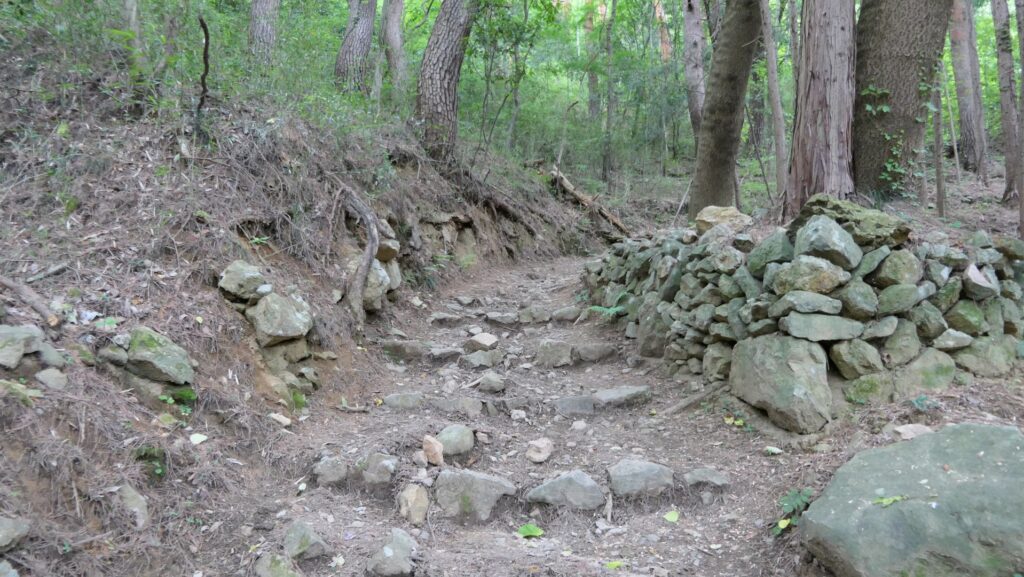

You will eventually find some signposts of Vertical Moat or Earthen Walls, which are around the entrance of the castle ruins. These actual ruins are partially covered with bushes, so you may not notice them without the signposts.

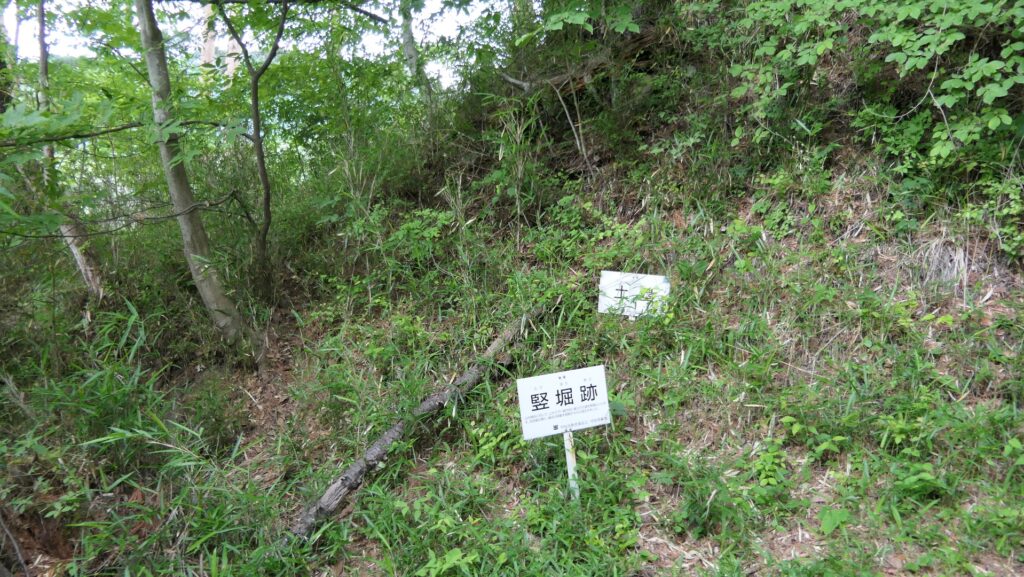
Original Gate Ruins along Trail
You will also find other ruins such as gates along the trail, however, the trail is not always on the original one. According to previous researches, the castle had 8 gates to reach the Main Enclosure on the top. As long as I checked, there are actually only 4 gate ruins with signposts along the current trail, which still look very defensive. I think they should be the original gates of No.2, No.3, No.6 and No.8.
The map around the castle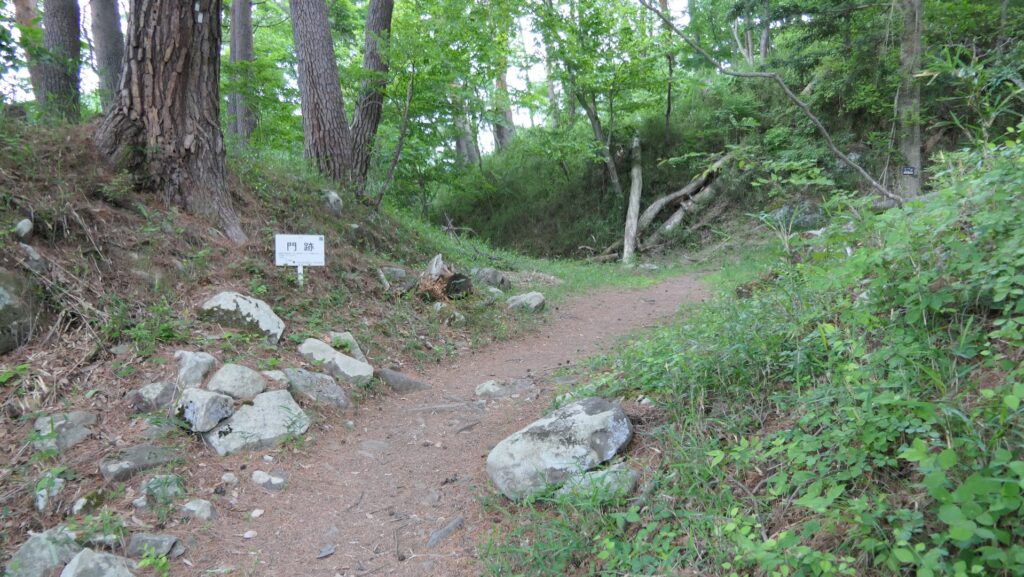
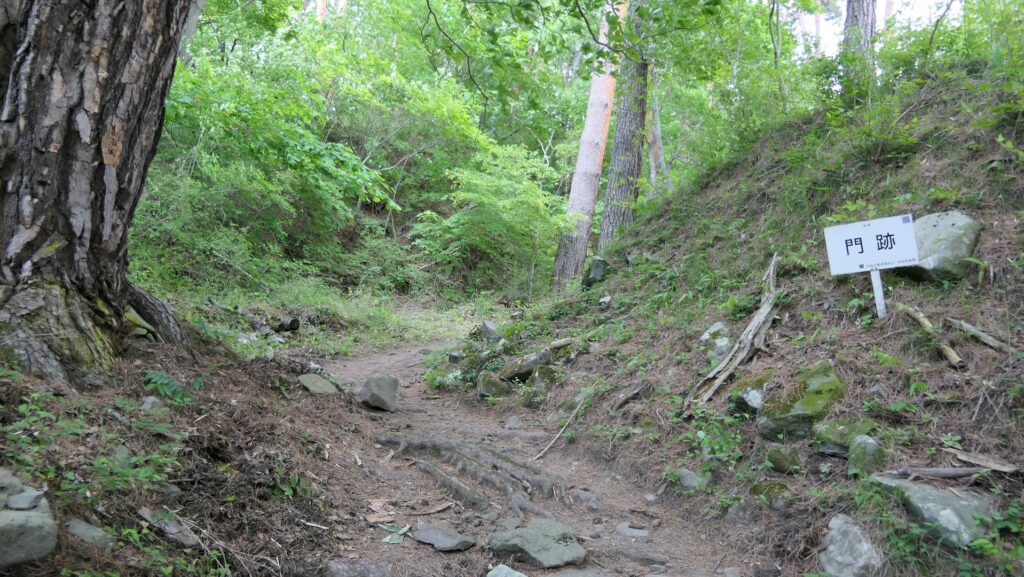
On the other hand, there are also other entrances of enclosures, which look like gate ruins without signposts. They are set straight in front of the enclosures, which mean not defensive, so may not be original and built later for hikers. If so, some original gate ruins (probably No.4, No.5 and No.7) are not on the current route probably because they are inconvenient for hikers.
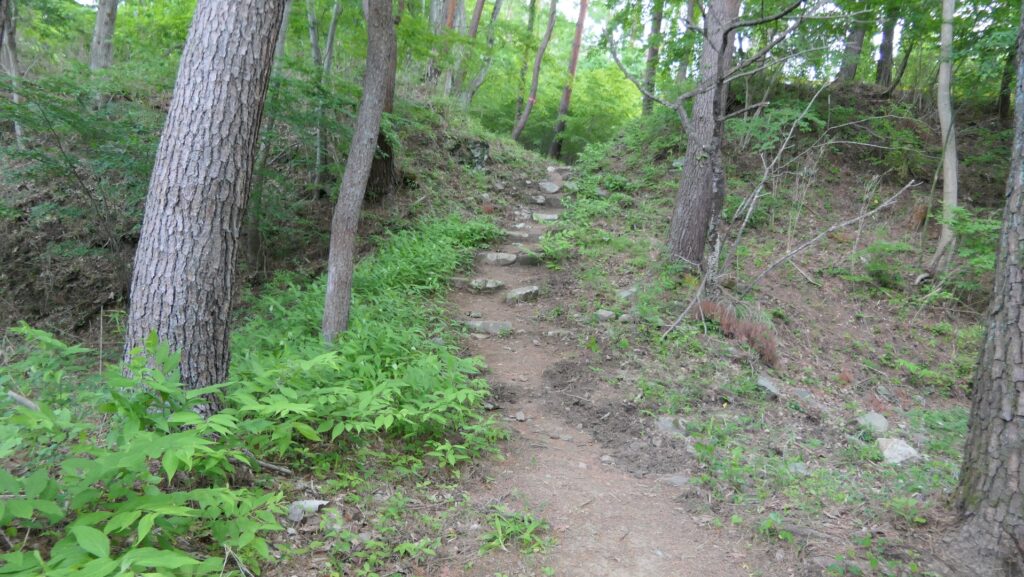
In addition, the No.1 gate ruins seem to be on the route, but without a signpost, which I didn’t notice.
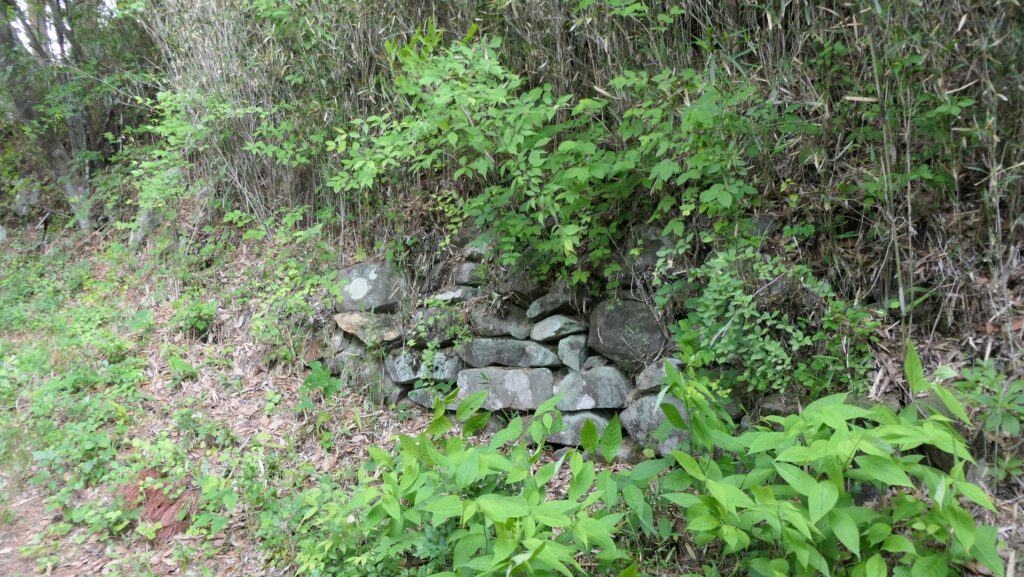
Who built Masugata System of this Castle?
Out of the 4 original gate ruins with signposts, No.2 (with the first signpost of Gate Ruins) and No.3 (with the second one) are so great. They are surrounded by stone walls, forming a square space, called Masugata. The trail also turns right to exit the gate, plus, other enclosures are in the back of the gate and ahead of the route. That meant the defenders would counterattack the front and side of the enemies in the Masugata.
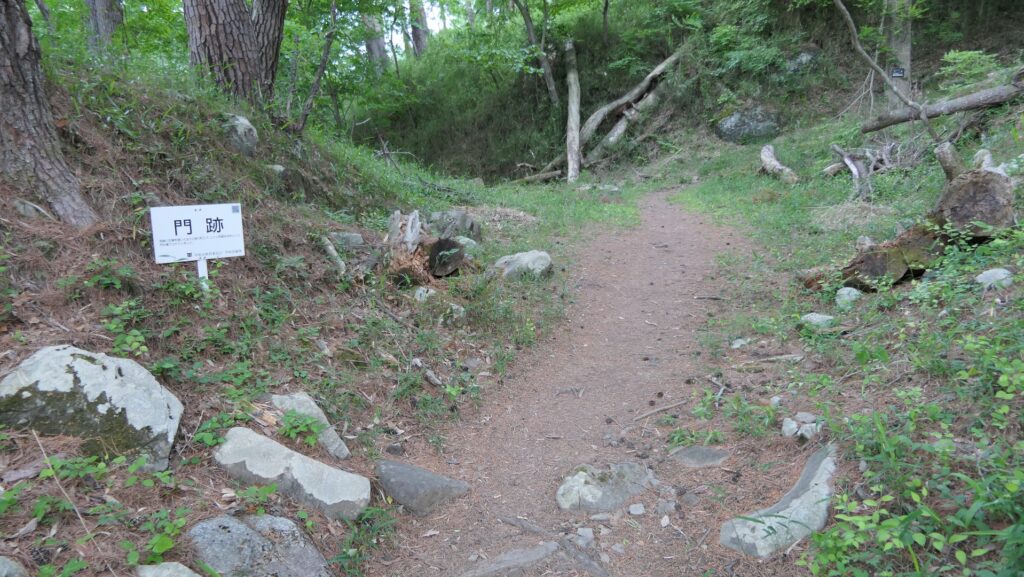
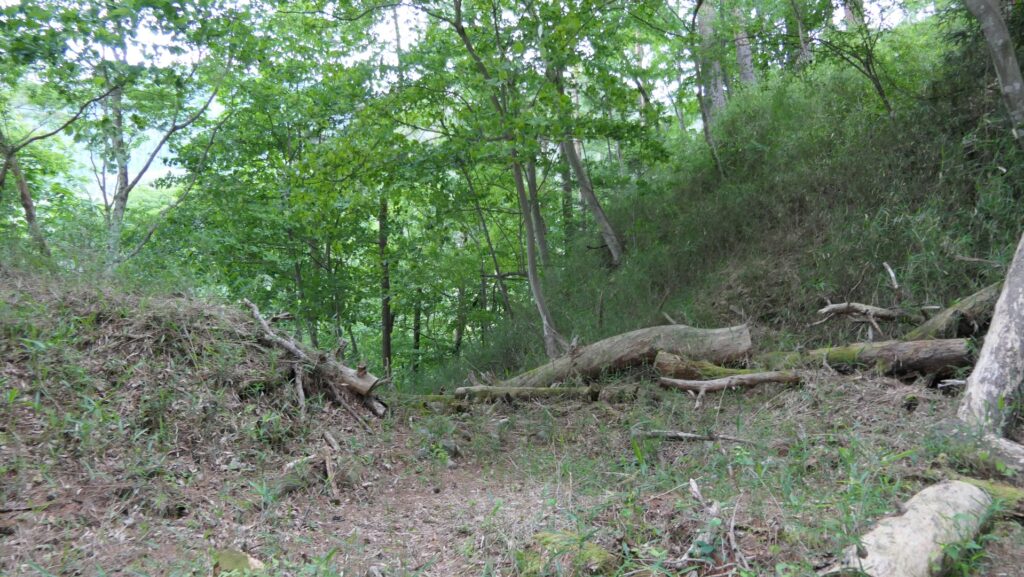

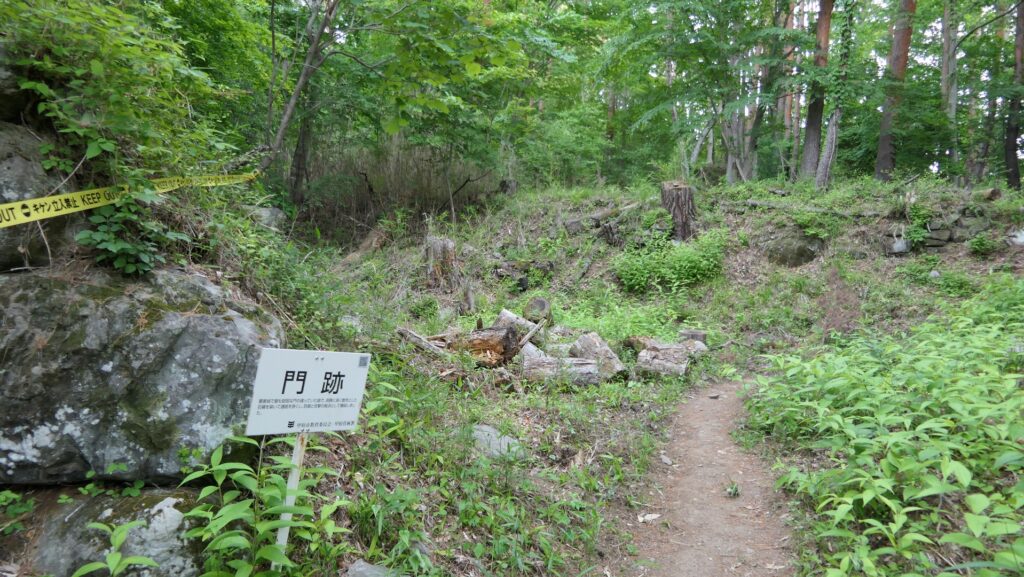
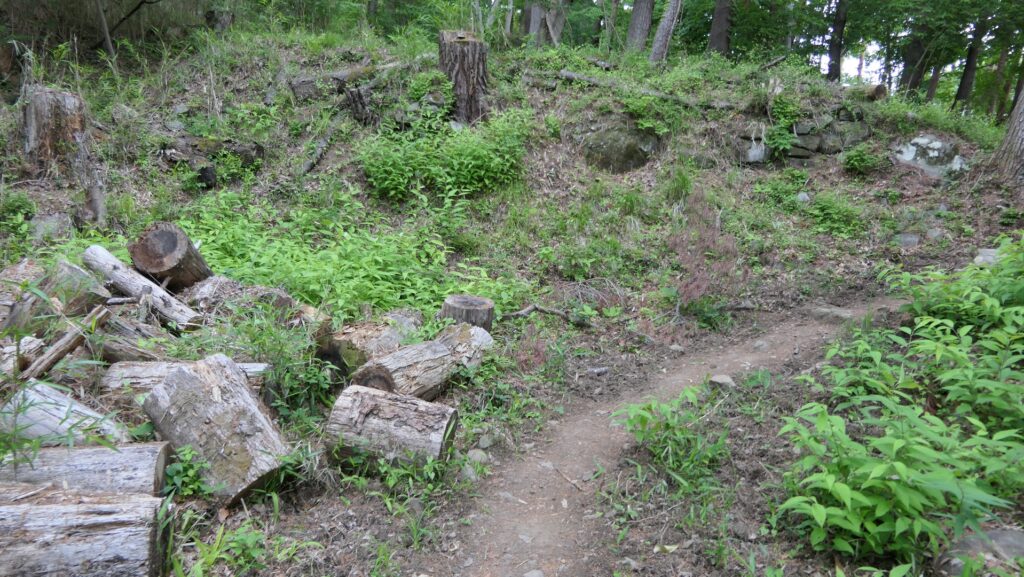
This structure is seen in other castles using high stone walls, which would be built much later than Yogaiyama Castle. However, it is not uncertain who built or improved this system. If the Takeda Clan built it, it would be very advanced, if Mitsuyasu Kato improved it, he would have applied it from other castles like Kofu Castle to Yogaiyama Castle.
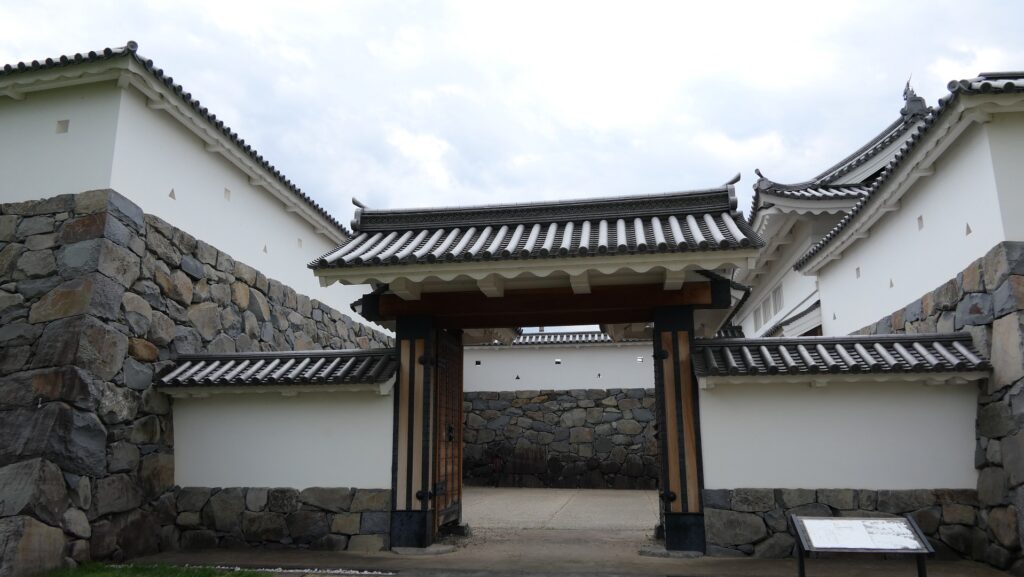
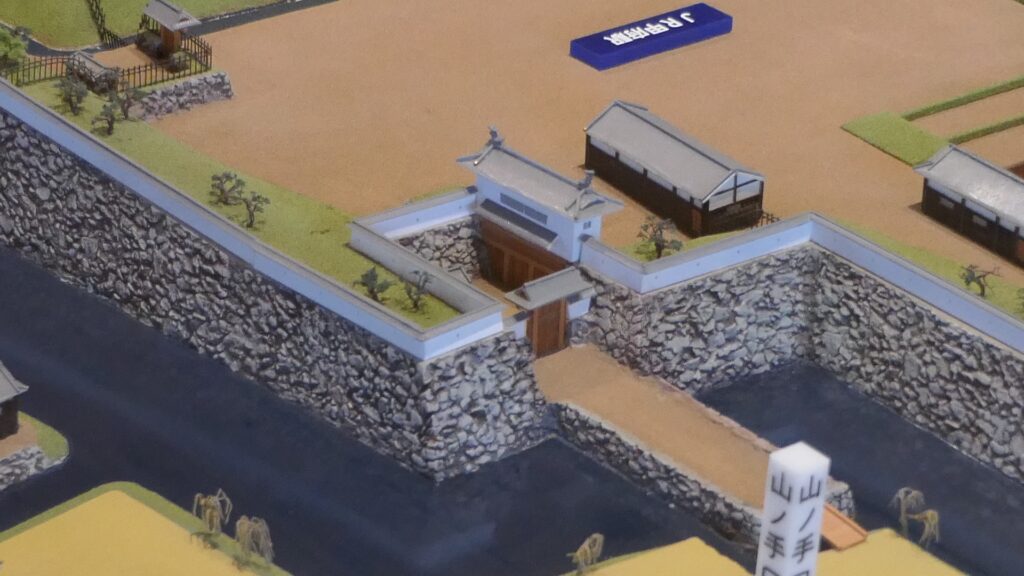
Main Enclosure, Largest one in Castle
The No.8 Gate Ruins are the entrance of the Main Enclosure. It is the largest enclosure in the castle on the top of the mountain, surrounded by thick earthen walls. There is only the stone monument for the birthplace of Shingen Takeda in it. There should be a good view point of Kofu city area, but unfortunately trees shut out the view.
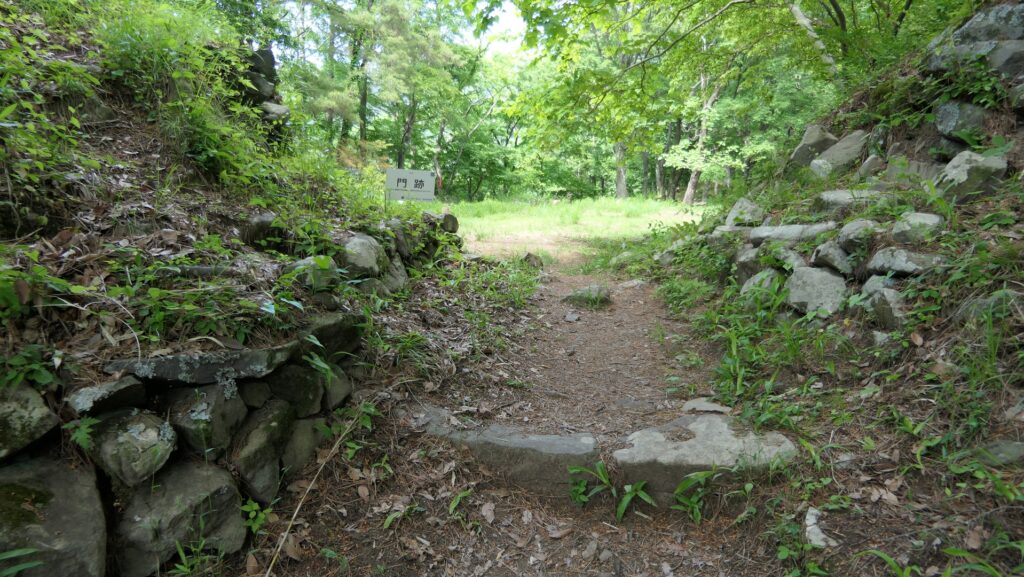
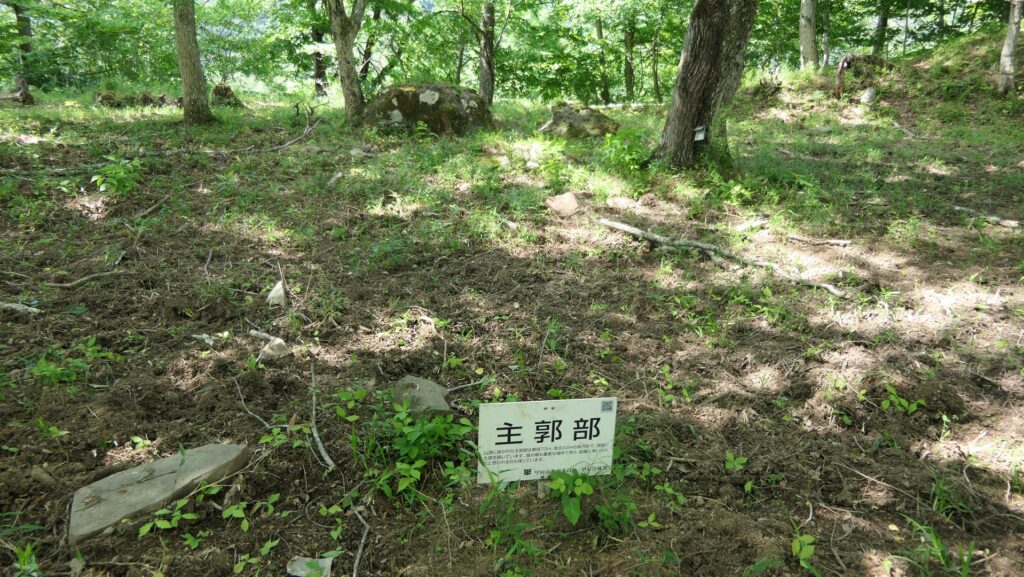
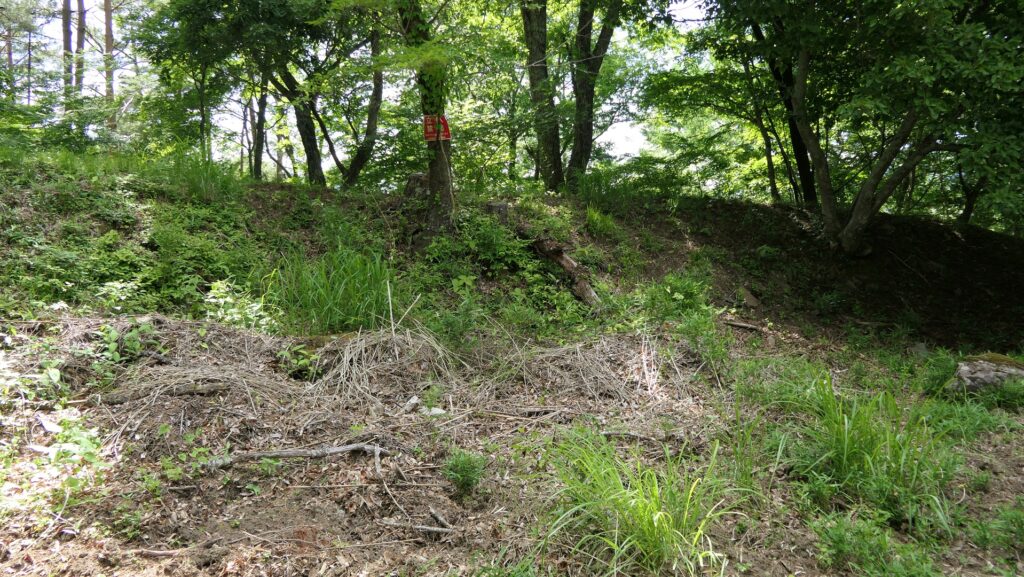
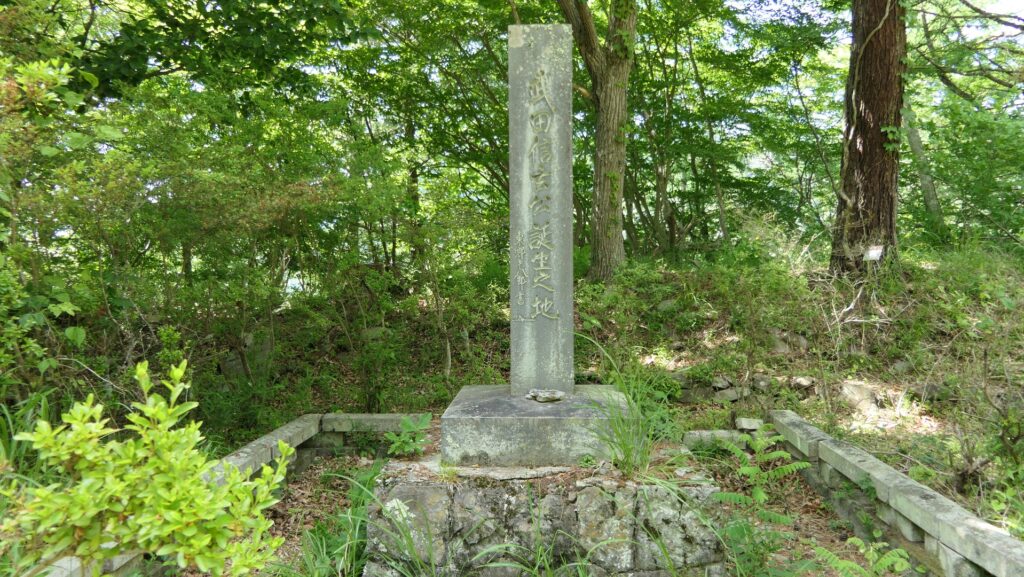
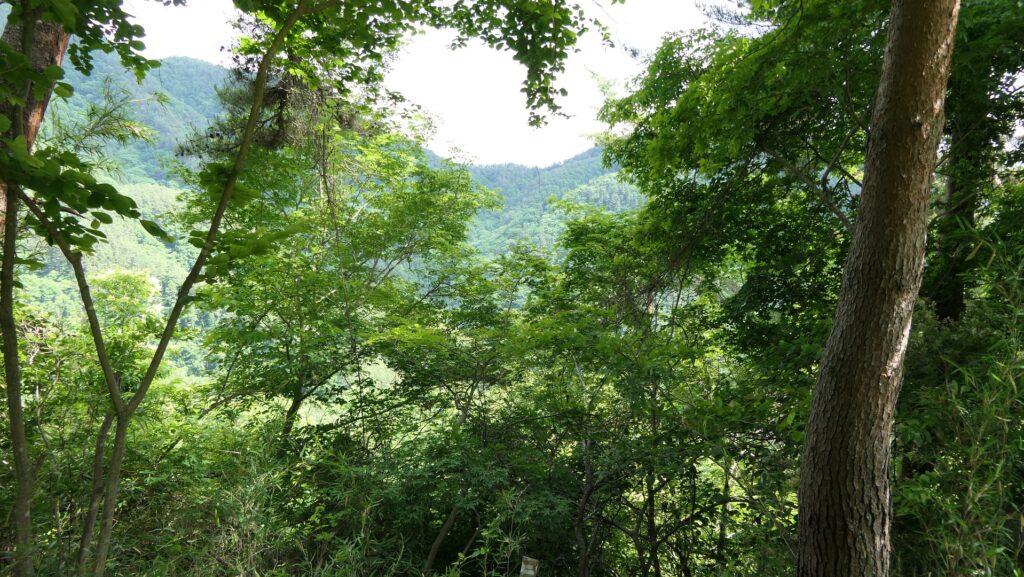
To be continued in “Yogaiyama Castle Part3”
Back to “Yogaiyama Castle Part1”

